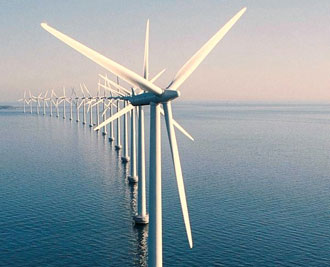I’m encouraged by Prime Minister Naoto Kan’s recent Deauville pledge to increase Japan’s reliance on renewable energy sources 20-fold in the coming ten to fifteen years, from about 1% now to 20% by the 2020s. It’s a bit vague, but it’s still epically ambitious.
More importantly, it’s a goal that all Japan can get behind after having seen that the concept of nuclear safety is dependent on the public’s willingness to turn a blind eye to safety risks that can’t be completely controlled.
If Japan can’t enforce nuclear safety regulations, no society on earth can. Not because it’s physically difficult but because it goes against human nature to remain fanatical day to day about procedures that seem to have so little connection to everyday concerns — until the unthinkable happens. And of course the unthinkable always does happen. Who even contemplated the possibility of a 9.0-magnitude earthquake followed 15 minutes later by a 120-foot tsunami? No one.
If the world were truly willing to pay the price of bracing for more such cataclysms, two-thirds of the world’s biggest cities would have to be abandoned today. That won’t happen, no matter how dire the predictions of cataclysms in the making.
What Kan’s pledge amounts to is holding Japan’s nuclear power plants to the current 30% share of electricity production while the additional 20% they were to provide by 2030 would be met instead by a massive national push toward solar, wind, geothermal and other renewable sources. Realistically, to achieve the goal of having 20% of Japan’s power production come from green sources by, say, 2026 would require some fantastic technological advances, followed by heroic reconfiguration of the national budget. One technological goal Kan mentioned specifically was cutting the cost of solar panels by two-thirds. That would have to be achieved within the next four or five years if solar power is to contribute its share to his ambitious timetable.
As with technologies like computer chips and LCD panels, progress accelerates in proportion to the amount of economic incentives. Now that even a nuclear-happy nation like Japan is turning toward green sources, more tech resources around the world will be devoted to efficiency advances in photovoltaics, focused solar, biomass, wind turbines, tidal turbines and geothermal generators. Until recently, efficiency gains in photovoltaics (PVs), for example, have been in the 1-2% per-year range. Now we are likely to see efficiency gains on the order of 2-3% per year for the next three or four years, followed by 4-6% annual gains thereafter.
If the past is any indication, a real national commitment by Japan in this area will contribute to some major gains and breakthroughs. For example, for about 50 years there was very little progress in consumer electronics. Then Japan entered the industry. Within a decade Japanese firms turned an exotic American invention called the transistor into the basis for a sustained revolution in smaller, lighter, cheaper radios, TVs, cassette players and, eventually, CD and DVD players.
LCDs were invented in 1964 by George Heilmeier, an American. It never achieved the cost efficiencies needed to enter consumer electronics until the Japanese took up the challenge in the 1980s. Until the Koreans got into the act in the 1990s, even the U.S. military and NASA depended on Japanese LCD makers for color displays.
With Japan’s production genius — not to mention its famous national cohesiveness — marshaled toward cost-effective renewable energy sources, the world can expect the green movement to achieve the critical mass in technological and financial resources to accelerate into a transformational revolution.

